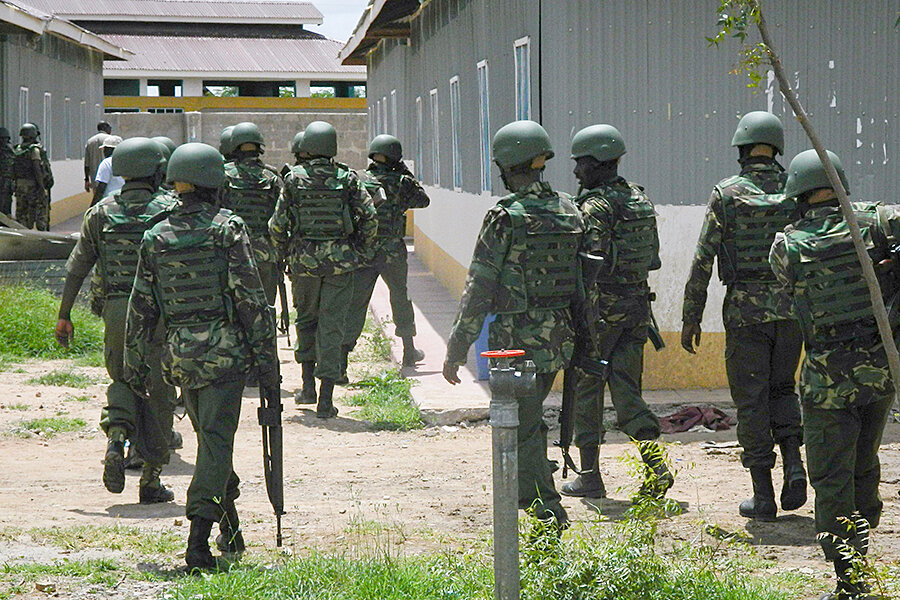Kenya says it repelled Al Shabab militants in town north of Garissa
Loading...
A daily roundup of terrorism and security issues.
Kenyan officials say they halted an attack by Al Shabab gunmen in the same northeastern county where the Somali militant group murdered nearly 150 college students last month.
The Thursday evening attack is the latest by the Al Qaeda-affiliated insurgents near the porous Somali border. It took place in Yumbis, about 40 miles north of Garissa, where the deadliest terrorist attack on Kenyan soil occurred in early April.
Masked militants rounded up villagers on Thursday, leaving only after placing black flags across the village, a resident told Al Jazeera. The militants were looking for non-Muslims, the resident said.
Kenya's interior ministry said Friday that “[security] forces swiftly mobilized and engaged the militants in a gun battle, no casualties were reported.”
Earlier this week, some 25 suspected Al Shabab militants entered another northeastern Kenyan town and briefly took over a mosque, preaching for more than two hours, the BBC reports. The men reportedly told locals not to share intelligence with Kenyan security forces.
Not only is Al Shabab demanding that Kenya pull its troops out of Somalia, but it also wants all non-Muslims to leave Kenya’s northeast, Al Jazeera reports.
Driving a wedge between Christians and Muslims has been a salient tactic of Al Shabab. During an attack on Nairobi’s upscale Westgate Mall in 2013, attackers questioned victims on their religion, and deliberately singled out Christians. The same tactic was used during last month’s siege and mass slaughter at Garissa University College.
Abdullahi Boru, Nairobi-based East Africa researcher with Amnesty International, told The Christian Science Monitor that Al Shabab's use of religion as a societal divider may be a sign of the group’s desperation.
With the militants losing territory to African Union forces and its leadership getting picked off by drones, the shock value of the tactic helps the group maintain relevance.
In April, following the deadly attack in Garissa, many raised questions about the government’s ability to respond to Al Shabab threats, the Monitor reported at the time.
Somalia-based Al Shabab has been a constant threat in the three counties that sit on Kenya’s eastern border with Somalia, but most of its attacks have been outside major population centers. That has made the assault on the university in Garissa particularly jarring – not only because the town is home to both military barracks and police headquarters, but because it followed high-profile warnings about a threat to a “major university.”
For Kenya, this latest attack underscores one of the key hurdles to curbing threats from Al Shabab: the porosity of the border between Somalia and Kenya's Mandera, Wajir, and Garissa counties. And it may increase pressure to take more assertive steps to close the gaps in a sparsely populated and lightly patrolled region.
“They don’t have the capacity to protect all the targets. This is why they need to close the border,” says Andrew Franklin, a Nairobi-based security analyst who has long argued for the construction of a wall along the entirety of the border with Somalia….
In January, Wajir County Comissioner Fredrick Shisia, who oversees security, acknowledged that the border region is too vast and empty to properly secure. Herdsmen and fighters can move freely between the two countries.
Kenya announced plans in March to build a wall along its border with Somalia, but many question if that measure will be enough.






